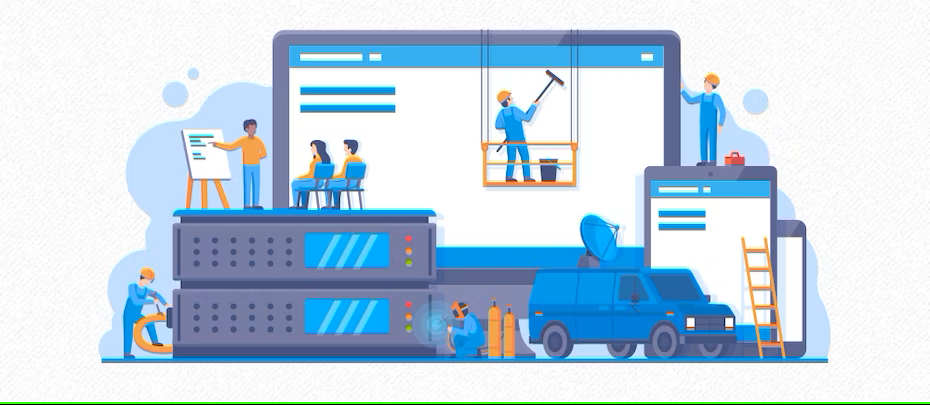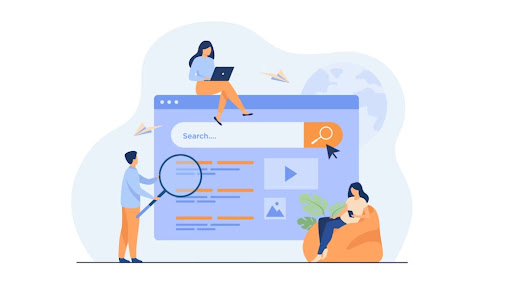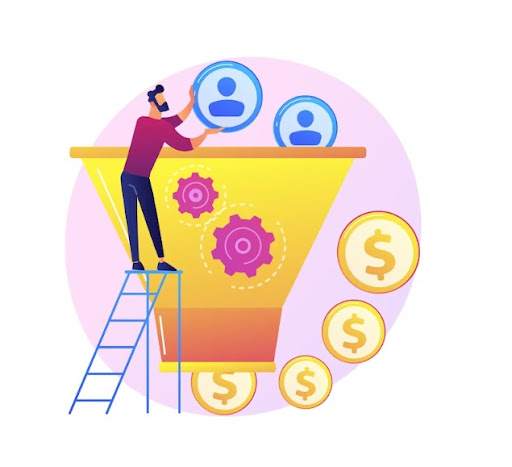If your offline business is successful, marketing is nothing new to you. But, the strategies for attracting clients to your online business could be quite different. In this post, we’ll discuss how to look for building a strong e-commerce channel and some of the top marketing techniques for promoting your online shop to potential customers. We’ll discuss not just how to increase website traffic but also how to combine offline and online marketing to maximize all of your potential customers.
With your online store, you’ll be able to connect with more potential customers than ever before and have ultimate control over the purchasing process. But, this is not a case of “if you build it, they will come.”
Getting people to visit your online shop
You may consider three key audiences while promoting your e-commerce website:
– Customers that have already visited your store or at least are aware of it
– Individuals who are interested in the sort of product you sell
– Individuals who, if they knew about your goods, would be interested in it
Even if it’s an oversimplified way to think about it, this three-pronged strategy might assist you to consider your various marketing initiatives and how to allocate your time and resources.
You should have a direct channel of connection with your initial audience, those who are aware of you, whether it be through email correspondence, content marketing, or social media.
Direct and “free” communication with them is possible (not counting any budget you might spend on tools).
You must devise strategies to help your second audience learn about your offerings that satisfy their wants. This can include search engine marketing, content development (such as blogging), and search engine optimization (SEO).
You must consider brand awareness while thinking about your third audience. Do you have a solution for an issue that they are yet unaware of? Or is your intended market utilizing a rival’s product? The responses will affect how you go about your marketing.
7 Promotional techniques for your online shop
Let’s look at eight strategies you may use to boost traffic to your new online business, from marketing to existing consumers to obtain new ones.
Use your email list and continue to expand it
Having a solid email marketing plan is crucial, even for brick-and-mortar businesses. Get as many email addresses as you can from people interested in your events, customers, and potential customers. After you start selling, you’ll be able to notify everyone via email that they may go to your store’s website.
To encourage visitors to tell their friends and family about your website, it might be a good idea to take into account a promotion for your email list subscribers or even a discount for referrals.
Keep collecting email addresses on your website since email is still one of the best marketing tools available to e-commerce businesses.
Increase your natural social presence
Take advantage of every opportunity to boost digital engagement for your online business.
Giving a little additional attention to your social media channels and making sure they are filled with lively photographs and interesting videos is one of the simplest and most efficient methods to doing this.
We adore how Native cosmetics utilizes its Instagram account to display these exquisite pictures of its merchandise. Hosting freebies, collaborating with bloggers that are active in your field, and utilizing relevant hashtags are additional excellent methods to use social media.
This is the time to expand your social media presence if you already have a devoted following. Increase the number of times you post, and spend a little more time producing compelling short films and rich visual material.
The possibility that their followers will learn about your company increases as engagement with your followers grows. Embrace user-generated content and encourage sharing.
If you need to improve your social media presence, do so right now.
You are not required to be everywhere. Ensure that you are present on the channels that are suitable for your target audience and concentrate your efforts there.
Make your website SEO-friendly
Search engine optimization (SEO) covers a wide range of topics; therefore, attempting to improve might send you spiraling into a very dark rabbit hole. If you’re just getting started, consider the following.
Consider your user’s perspective. How does your target market discuss your products? What do they want to know?
Pay attention to the text on the page. On-page content includes things like product names and descriptions, pictures, any blogs you may have, and other information you may have.
Make sure the material addresses your consumers’ inquiries and employs terminology they could readily use when looking for relevant items.
Also, meta tags are crucial.
A search engine’s title tags, which function as headlines, aid it in determining the subject matter of each page. Your website’s pages should each have their own distinct title tag.
The meta descriptions for each page are concise summaries. Users will notice your title tag and meta description before anything else when your website appears on a search engine results page.
Google Ads
In order to rank top in search engine results pages, you may bid on keywords while using Google Ads for search engine marketing. Search engine optimization is all about obtaining the desired “top position,” but be aware that Google AdWords will still appear first.
Since search engine marketing doesn’t involve any design work and may be quite efficient at bringing in new visitors, it’s a terrific approach to promote your website.
Results are provided in real-time, and you may modify your marketing strategy as you go based on performance.
Collaborate with brands
To cross-promote, and establish alliances with other brands. Locate a company with a complementary product and a similar target market.
Each business partner so reaches a completely fresh yet pertinent audience.
If you offer outdoor equipment, for instance, a relationship with a company that specializes in hiking shoes would be appropriate.
There are several ways to cross-promote, and you may do it at every stage of the funnel. Top-of-funnel activities include things like joint-sponsoring a podcast or blog about outdoor living.
A co-branded gift guide can be a terrific idea depending on the season. You may also run promotions at the bottom of the funnel, such as giving customers who buy one product a discount when they buy another.
Use influencer marketing, if you can
Influencers are persons with significant internet followings who have the ability to “influence” their followers’ purchase decisions.
Partnering with the proper influencer may increase brand recognition by putting your product in front of a large number of potential buyers.
Make sure your chosen influencer’s following and brand values match those of your target audience in order to maximize the effectiveness of influencer marketing.
A blogger blogging about your product, a social media user evaluating or showcasing your product, or an influencer speaking about your product at an event are all examples of common influencer marketing strategies.
Use your physical store, if you have
If your brick-and-mortar company has a strong brand and a devoted following, you may leverage the time you spend with them in person to promote your new online store.
For instance, you may assist clients to continue to connect with your business long after they leave the store by using non-intrusive methods.
This might involve requesting their email addresses at checkout and informing them about your customer loyalty program.
If you have one, and letting them know about any social media campaigns you are conducting that they might want to follow.
Provide flyers with discount coupons so customers may distribute them to friends and family who might not be in the area of your actual business.
Your in-person clients may serve as your biggest evangelists and aid in the wide dissemination of your message.
Never forget mini funnel or whole conversion funnel building
You recognize the significance of turning website visitors into paying clients as a business owner or marketer. Yet without a solid plan in place, getting there might seem impossible. Mini funnels and conversion funnels are useful in this situation.
We’ll go through the fundamentals of conversion funnels and small funnels in this post, along with how you can use them to increase website conversions.
What are mini funnels, exactly?
Micro funnels are narrower, more targeted funnels that push website users in the direction of a certain conversion or activity. Mini conversion funnels are intended to be less complicated, more streamlined, and distracting than conventional conversion funnels.
Let’s take the scenario where you manage an online business selling expensive watches.
A single call-to-action (CTA) button that invites users to peruse your collection might serve as a mini-funnel on your site.
When a visitor hit that button, they are directed to a specific product page mini-funnel where they are given more details about the watch and persuaded to buy it.
Lead generation, product launches, event registrations, and other uses are all possible with mini funnels.
How do conversion funnels operate?
Larger, more intricate funnels called conversion funnels direct website users through a sequence of phases leading to conversion at the end. The client journey, from awareness to consideration to purchase, is covered in detail across these funnels.
Let’s take the scenario where you manage a digital marketing firm that provides website design services. The phases in your conversion funnel may be as follows:
– Awareness: Getting people to visit your website through blog entries, social media advertisements, or other forms of advertising.
Think considering informing visitors about your website design offerings through case studies, reviews, and other social proof methods.
– Conversion: Encouraging site visitors to contact your team for a consultation or to obtain a quote.
– Retention: Keeping in touch with leads who have asked for a quotation or consultation in order to seal the sale.
Creating effective micro funnels and conversion funnels
Now that you are aware of their foundations let’s talk about how to build micro funnels and conversion funnels properly. Keep in mind the following guidance:
– Choose your goal before starting the funnel-building process. What do you want your guests to do?
Do you want them to make a purchase, schedule an appointment, or join your email list? You may start building your funnel around a target once you have one in mind.
– Make it Simple: As simplicity is the key to mini funnel success, keep your funnel design straightforward and concentrated. Make sure your funnel is simple to follow and avoid adding extraneous pieces or information that can distract visitors.
– Once you’ve constructed your funnel, test it out to see how it works before making changes. Track your results as you use A/B testing to evaluate various components, such as headlines, CTAs, and colors. Based on what appeals to your audience, iterate on your design.
– Optimize for Mobile: As more and more people use their mobile devices to access the internet, it’s critical to optimize your conversion and micro funnels for mobile. Make sure your funnels load quickly and are simple to use on mobile devices.
The most important tools for increasing website conversions are funnels. You can construct efficient funnels that direct visitors toward doing the activities you want them to take by keeping your funnels straightforward, concentrating on your goals, testing, and iterating on your design.
Conclusion
You must successfully advertise your online store if you want to build a robust e-commerce channel.
You must locate and communicate with your target market in order to do this, whether they are present customers, future consumers, or those who may not yet be aware of your products.
You may employ a variety of techniques, including email marketing, social media marketing, search engine optimization, Google Ads, and cross-promotion, to improve website traffic.
You may enhance your internet presence and connect with more potential clients by utilizing these strategies. But, it’s crucial to focus on the channels that are most effective for your target demographic while developing your marketing tactics.




